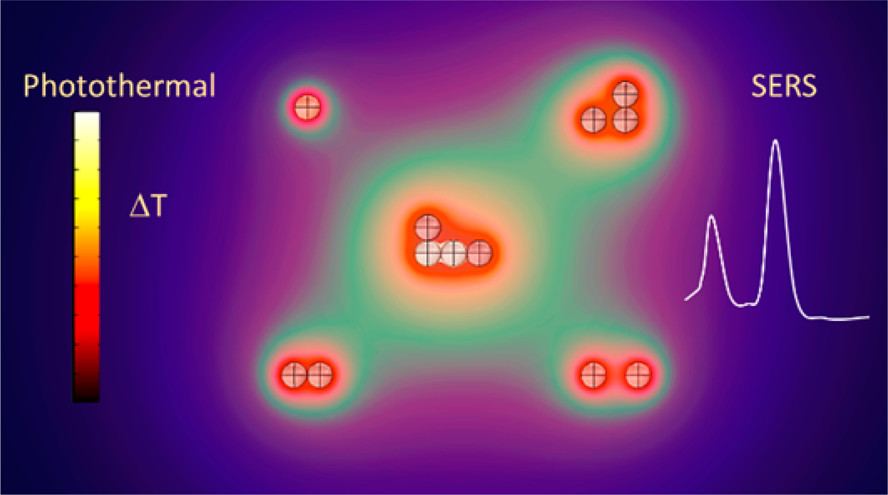Photothermal Microscopy of Coupled Nanostructures and the Impact of Nanoscale Heating in Surface-Enhanced Raman Spectroscopy
The optical properties of plasmonic nanoparticles are strongly dependent on interactions with other nanoparticles, which
complicates analysis for systems larger than a few particles. In this work we examined heat dissipation in aggregated nanoparticles and its influence on surface-enhanced Raman scattering (SERS) through correlated photothermal heterodyne imaging, electron microscopy, and SERS measurements. For dimers the per particle absorption cross sections show evidence of interparticle coupling; however, the effects are much smaller than those for the field enhancements that are important for SERS. For larger aggregates the total absorption was observed to be simply proportional to aggregate volume. This observation allows us to model light absorption and heating in the aggregates by assuming that the particles act as independent heat sources. The heat dissipation calculations show that very high temperatures can be created at the nanoparticle surface and that the temperature decreases with increasing thermal conductivity of the surroundings. This is in agreement with the SERS measurements that show faster signal degradation for air compared to water environments.


Leave a Reply